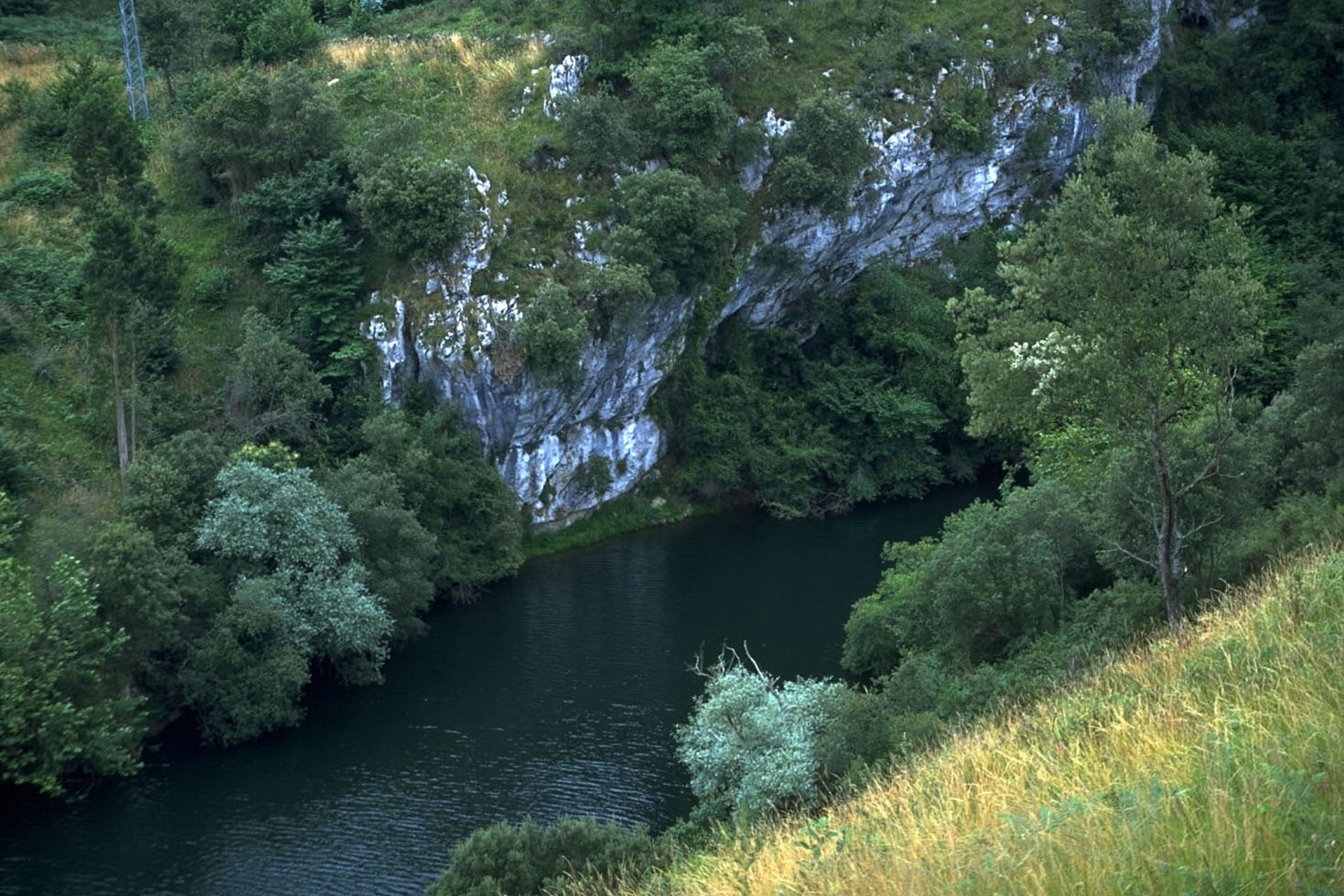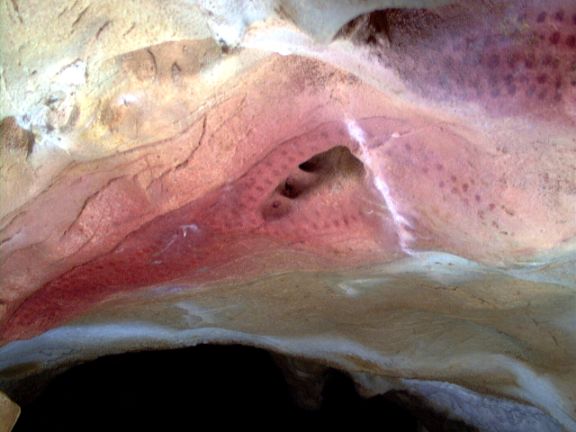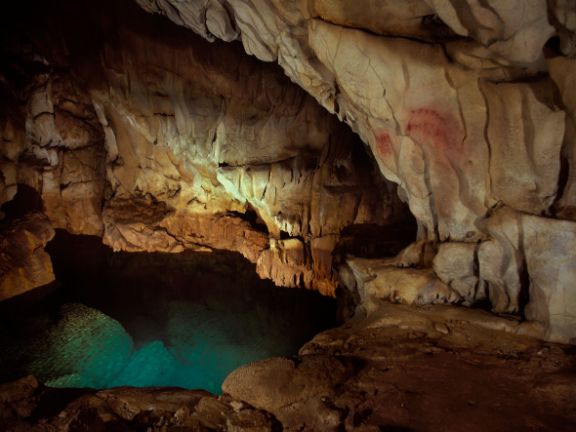Chufín Cave

Identification of the Property
SubirRiclones, Rionansa, Autonomous Community of Cantabria
Access
Take the Muñorrodero exit from the Cantabrian Motorway (A8/E-70), and take the CA-181 road towards Puentenansa. Before reaching Celis, take the road to Riclones. The cave is reached in the company of the guide, either by boat across La Palombera reservoir or by the path following the right bank of the River Lamasón.
Geographical coordinates
UTM 30T 381650E / 4794540N Z: 110
Description
SubirTopographic description
The cave is located at the confluence of the Rivers Lamasón and Nansa, in a cliff on the right bank of the River Lamasón. The entrance has the form of a wide rock-shelter, with a low passage leading off towards a large chamber. The lowest part of the cave, which is deeper than the entrance, is permanently flooded as a result of the building of La Palombera reservoir, which has filled the lower part of the cave with its waters.
Date of discovery
The prehistoric art inside the Chufín Cave, or Moor Chufín’s Cave, was discovered by M. de Cos Borbolla in 1972.
Archaeological research
The discovery of the cave art was reported to M. Almagro Basch, at that time the director of the National Archaeological Museum, who at once took charge of its study. During the course of this work a series of engravings were found in the outer rock-shelter. Almagro’s subsequent publication in 1973 remains the only major article on the art in the cave. In 1974, V. Cabrera Valdés and F. Bernaldo de Quirós began excavating the archaeological deposit in the entrance, working in two areas: below the main wall of engravings and on the right of the rock-shelter. They uncovered a large habitation structure with a typically Solutrean lithic assemblage, coherent with the radiocarbon date obtained for it: 17,420 ± 200 B.P.
 Pulse para ampliar
Pulse para ampliar
 Pulse para ampliar
Pulse para ampliar
Artistic contents: paintings and engravings
The cave holds two, or possibly three, groups of art, differentiated by their location, the techniques used and their chronology. The vestibule has a large group of deeply-cut engravings, representing fourteen hinds, a bison and other bovines, as well as non-figurative lines. Many of the figures are rather stylised, and drawn with just three lines: a short, straight line for the top of the head and an ear, a curving cervical-dorsal line, and a third line for the lower part of the head, neck and chest. They form the most representantive assemblage of a type of engraving only found in caves in the western half on northern Spain, at sites such as La Lluera in Asturias and Hornos de la Peña in Cantabria. It is curious that some of the figures at the top of the frieze are upsidedown; presumably these were drawn from above, with the artist leaning down from the upper surface of the block of limestone. These engravings can be assigned to archaic phases of cave art development, datable in the Gravettian or early Solutrean. The interior chamber has art on both walls. On the right hand side, two horses, a bovine, another quadruped and groups of vertical lines and other marks are all painted in red. The left hand wall has engravings as well as paintings. The former include three bison, two horses, and a doubtful anthropomorph, all drawn with very fines lines. The paintings, in red, are compositions of parallel lines of dots, associated with natural rock forms, such as cornices, fissures or concavities. The interior engravings are in a later style than the ones in the vestibule and could be contemporary with the Solutrean deposit in the entrance. In contrast, the interior red paintings probably form one of the oldest groups of figurative art inside a cave in north Spain.
Bibliography
SubirALMAGRO BASCH, M. 1973. Las pinturas y grabados rupestres de la cueva de Chufín, Riclones (Santander). Trabajos de Prehistoria 30: 9-67.
ALMAGRO BASCH, M., CABRERA VALDÉS, V., BERNALDO DE QUIRÓS, F. 1977. Nuevos hallazgos de arte rupestre en cueva Chufín, Riclones (Santander). Trabajos de Prehistoria 34: 9-29.
ONTAÑÓN PEREDO, R. 2018. 10 Cuevas Patrimonio Mundial en Cantabria. Santander: Consejería de Educación, Cultura y Deporte - Gobierno de Cantabria / Asociación de Amigos del MUPAC.



